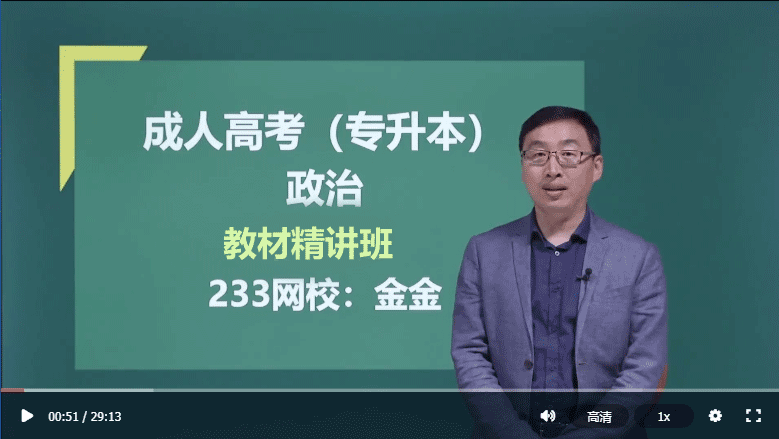шБшЏшО хЏМяМцфККщЋшяМфИхцЌяМшБшЏ2
чЌЌх ЋшхЈшЏяМ7-1~13-1яМ
шшЏхЄЇчКВшІцБ
хЈшЏх
цЌцЖцушЂЋхЈшЏцухЈхшЏухшЏфЛЅхшцшЏцАу
яМ1яМхЈшЏчхчБЛяМхчЉхЈшЏфИфИхчЉхЈшЏяМшПчГЛхЈшЏяМхЉхЈшЏяМц цхЈшЏу
яМ2яМхЈшЏчхКцЌхНЂхМяМхЈшЏххНЂушПхЛхшЏучАхЈхшЏяМфИшЇххЈшЏчхНЂхМ
яМ3яМхЈшЏфИЛшІцЖцчццхх ЖчЈцГух цЌфИшЌчАхЈцЖяМчАхЈшПшЁцЖяМчАхЈхЎццЖяМчАхЈхЎцшПшЁцЖяМфИшЌшПхЛцЖяМшПхЛшПшЁцЖяМшПхЛхЎццЖяМхЎцшПшЁцЖяМфИшЌхАцЅцЖяМхАцЅхЎццЖяМшПхЛхАцЅцЖу
яМ4яМц цхЈшЏхх ЖхКцЌчЈцГу
яМ5яМщшАшЏхЈшЏяМфИхЎхМухЈхшЏухшЏяМчхНЂхМхфИЛшІчЈцГу
яМ6яМшЂЋхЈшЏцчццхх ЖхКцЌчЈцГу
яМ7яМшцшЏцАчхИИшЇхНЂхМхх ЖхКцЌчЈцГу
фИухЈшЏчхчБЛ
хЈшЏчБЛххЈхЅхфИччЈцГ
хчЉхЈшЏхщЂцЅхЎОшЏ
фИхчЉхЈшЏхщЂфИцЅхЎОшЏяМццЅ"фЛшЏ/хЏшЏ+хЎОшЏ"
шПчГЛхЈшЏхщЂцЅшЁЈшЏ
хЉхЈшЏхщЂцЅхЈшЏххНЂ
ц цхЈшЏхщЂцЅхЈшЏххНЂяМццЅхЈшЏчхЎцхМ
фКухЈшЏчхКцЌхНЂхМ
хЈшЏщЄххНЂхЄяМшПцшПхЛхМушПхЛхшЏхчАхЈхшЏфИчЇхНЂхМу
яМфИяМшПхЛхМхшПхЛхшЏчцц
1яМфИшЌц хЕфИхЈххНЂхх -edухІяМwork-worked, help-helpedу
2яМфЛЅeчЛхАОчхшЏяМхЈххНЂхх -dухІяМlike-liked, joke-joked, hope-hoped.
3. фЛЅ"шО щГхцЏ+y"чЛхАОчхшЏяМхyфИКiхх -edухІяМstudy-studied, carry-carried, copy-copiedу
4яМфЛЅщшЏЛщщГшуцЋхАОхЊцфИфИЊшО щГхцЏчЛхАОчхшЏяМххцЋхАОчшО щГхцЏхх -edухІяМstop-stopped, prefer-preferred, admit-admitted, plan-planned.
цфКхЈшЏчшПхЛхМхшПхЛхшЏцчЙцЎчхНЂхМу
cost-cost-cost
meet-met- met
catch-caught-caught
rise-rose-risen
drive-drove- driven
get-got-got/gotten
leave-left-left
smell-smelt/smelled-smelt/smelled
tell-told-told
take-took-taken
яМфКяМчАхЈхшЏчцц
1яМфИшЌц хЕфИхЈххНЂхх -ingухІяМgo-going, carry-carrying, play-playing, answer-answering, ask-askingу
2яМфЛЅфИхщГчeчЛхАОчхшЏяМхЛeх -ing ухІяМlive-living, come-coming, dance-dancing, write-writingу
3яМфЛЅщшЏЛщщГшуцЋхАОхЊцфИфИЊшО щГхцЏчЛхАОчшЏяМххцЋхАОчшО щГхцЏхх -ing ухІяМsit-sitting, begin-beginning, permit-permitting, run-running, forget-forgetting.
цфКхЈшЏччАхЈхшЏцх ЖчЙцЎхНЂхМухІяМdie-dying, lie-lying, tie-tying, picnic-picnicking.
фИухЈшЏчфИЛшІцЖц
яМфИяМфИшЌчАхЈцЖ
фИшЌчАхЈцЖшЁЈчЄКчЛхИИцЇцфЙ цЏцЇчхЈфНучАхЈччЙхОхчЖцуцЎщчччу
Galileo said the earth moves around the sun.
фИшЌчАхЈцЖчшАшЏхНЂхМяМ
1яМхНхЈшЏфИКхЎфЙхЈшЏяМхІread, go, lookцЖяМшАшЏчЈхЈшЏххНЂяМхІхЎхЅхЈхЈшЏхщЂх do not яМчщЎхЅх хЉхЈшЏdo ухИИхalways, often, usually, sometimes, everydayчшЁЈчЄКцЖщДччЖшЏшПчЈу
I go to school everyday.
I read the newspapers after lunch.
Do you agree with me?(agree with sb. хццфККшЇчЙ)
I don't quite agree with you.
фИЛшЏфИКчЌЌфИфККчЇАхцАцЖяМхЈшЏхщЂфИшЌх sяМх ЗфНххшЇхфИхшЏххЄцАчИхяМухІхЎхЅх does not, чщЎхЅх does .
My father gets up at six everyday.
He loves sports.
Does it hurt?
Does Miss Wu teach us English?
The machine doesn't run smoothly.
2яМхНхЈшЏфИКbeцЖяМшАшЏщфККчЇАхцАчфИхчЈam, is, are фИчЇхНЂхМу
One is not guilty until he is proved. хЈшЂЋшЏццчНЊфЙхяМфККщНцЏц чНЊчу
Knowledge is power.чЅшЏхАБцЏхщу
She isn't afraid to go to school alone now.
Are you from Yunnan?яМbe from цЅшЊтІтІхАцЙяМ
What she says is true.
3яМхНхЈшЏфИКhave, шЁЈчЄК"ц"цЖяМшАшЏчЈhave, фИЛшЏфИКчЌЌфИфККчЇАхцАцЖяМчЈhas. хІхЎхЅчИхКчЈhaven't, hasn't, цdon't have , doesn't have, чщЎхЅхАhave, has цшГфИЛшЏхщЂцх хЉхЈшЏdo, does.
My sister has a lot of toys.
She always have a lot of homework to do.
Has she/Does she have any money on her?
They don't have/haven't much experience.
хНhave фНхЎфЙхЈшЏяМхІhave a look, have breakfast, have lunch, have supperцЖяМхЅхчшАшЏхНЂхМфИх ЖфЛхЎфЙхЈшЏчИху
Let's have a look at the picture.
I always have breakfast at home.
She often has lunch in the dinning hall.
alwaysуoftenщхИИцОхЈчГЛхЈшЏфЙхяМхЎцхЈшЏфЙху
чЙхЛцЅчцДхЄ>>
чИх ГцЈш
- 2017хЙДцфККщЋшфИхцЌшБшЏшшЏххЙДчщЂфНцчВОщцБцЛ03-28
- 2017хЙДцфККщЋшфИхцЌшБшЏшшЏххЙДчщЂфНцчВОщфЙ03-24
- 2017хЙДцфККщЋшфИхцЌшБшЏшшЏххЙДчщЂфНцчВОщх Ћ03-24
- 2017хЙДцфККщЋшфИхцЌшБшЏшшЏххЙДчщЂфНцчВОщфИ03-24
- 2017хЙДцфККщЋшфИхцЌшБшЏшшЏххЙДчщЂфНцчВОщх 03-24
| ПЮГЬзЈвЕУћГЦ | НВЪІ | дМл/гХЛнМл | УтЗбЬхбщ | БЈУћ |
|---|---|---|---|---|
| гяЮФ(ИпЦ№Еу)ОЋНВАр | ЕЫО§УФ | ЃЄ150 / ЃЄ150 |  |
БЈУћ |
| гЂгя(ИпЦ№Еу)ОЋНВАр | Monica | ЃЄ150 / ЃЄ150 |  |
БЈУћ |
| Ъ§бЇ(ЮФ)ОЋНВАр | ЭѕЗМ | ЃЄ150 / ЃЄ150 |  |
БЈУћ |
| Ъ§бЇ(Рэ)ОЋНВАр | ТогзжЅ | ЃЄ150 / ЃЄ150 |  |
БЈУћ |
| ДѓбЇгяЮФ(зЈЩ§БО)ОЋНВАр | ХЗбєАиСи | ЃЄ150 / ЃЄ150 |  |
БЈУћ |
| гЂгя(зЈЩ§БО)ОЋНВАр | Monica | ЃЄ150 / ЃЄ150 |  |
БЈУћ |
| ИпЕШЪ§бЇ(вЛ)(зЈЩ§БО)ОЋНВАр | ЭѕЬЮ | ЃЄ150 / ЃЄ150 |  |
БЈУћ |
| ИпЕШЪ§бЇ(Жў)(зЈЩ§БО)ОЋНВАр | ТогзжЅ | ЃЄ150 / ЃЄ150 |  |
БЈУћ |
ИЈЕМПЮГЬ
- ИпЦ№Еу-Ъ§бЇ(ЮФЪЗВЦОРр)

- ЭѕЗМРЯЪІ
 УтЗбЪдЬ§
УтЗбЪдЬ§
- ИпЦ№Еу-гЂгя

- MonicaРЯЪІ
 УтЗбЪдЬ§
УтЗбЪдЬ§
- зЈЩ§БО-ДѓбЇгяЮФ

- ХЗбєАиСиРЯЪІ
 УтЗбЪдЬ§
УтЗбЪдЬ§
АрМЖНщЩм
ЬзВЭАќКЌЃКзЈЩ§БОVIPАр/ИпЦ№ЕуVIPАрЃЈКЌОЋНВ+ецЬтНтЮі+ФЃПМЕуЬт)
ЬзВЭгХЪЦЃК1ЁЂЫјЖЈКЫаФПМЕу
2ЁЂПМЧАЗЂЗХ2ЬзЪдЬт
3ЁЂУтЗбжибЇвЛДЮБЃеЯ
ХфЬзЗўЮёЃК1ЁЂУтЗбЬтПт
2ЁЂПЮГЬНВвх+ПЮМўЯТди+вЦЖЏПЮЬУ







 УтЗбЪдЬ§
УтЗбЪдЬ§ 




